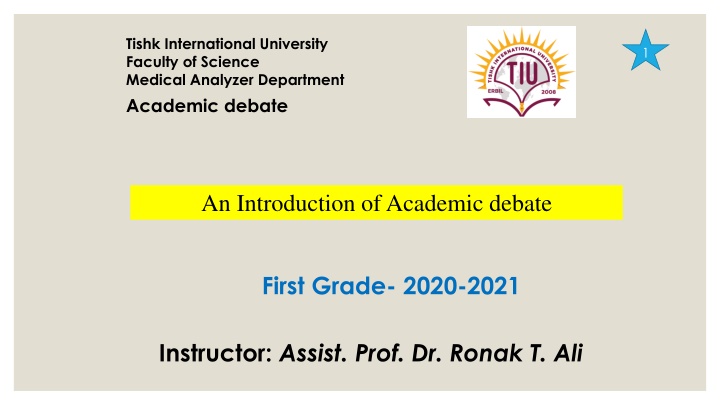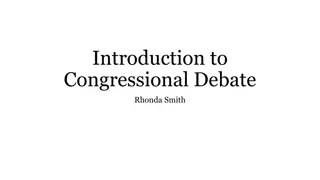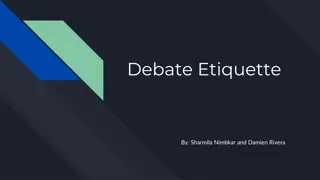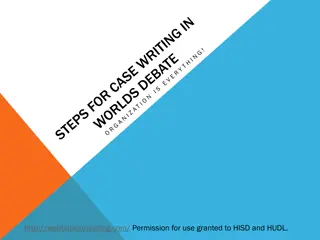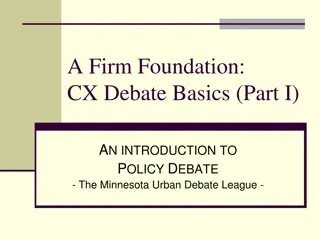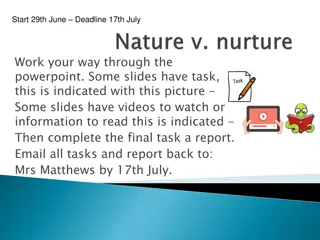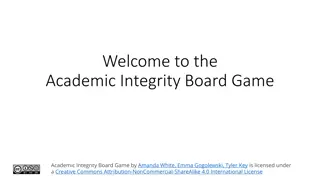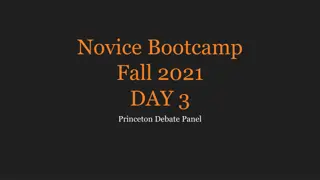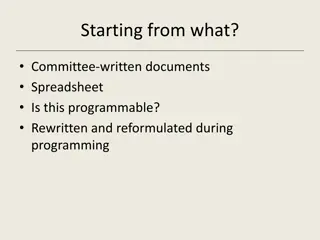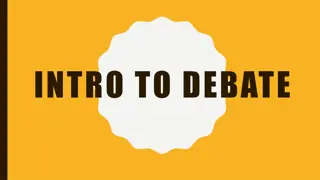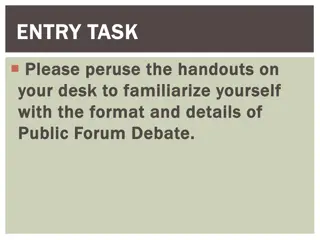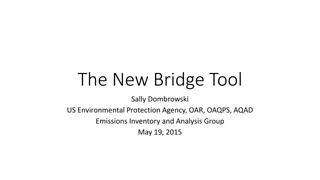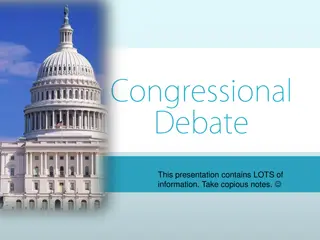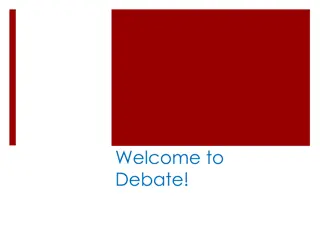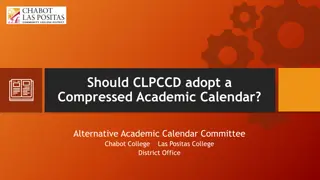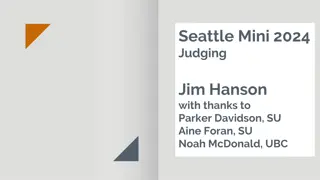Benefits of Academic Debate: Exploring Effective Learning Tool
Debating in an academic setting offers a platform for students to develop critical thinking skills, articulate their arguments clearly, and engage in structured discussions. It enhances qualities like organization, evaluation, and adaptability while fostering persuasive communication. Debaters must adhere to rules, show respect, and offer different perspectives for the audience's consideration. Understanding different debate formats and roles is crucial for a successful debate experience. The process involves setting resolutions, presenting arguments, cross-examining opponents, and concluding with final rebuttals.
Download Presentation

Please find below an Image/Link to download the presentation.
The content on the website is provided AS IS for your information and personal use only. It may not be sold, licensed, or shared on other websites without obtaining consent from the author.If you encounter any issues during the download, it is possible that the publisher has removed the file from their server.
You are allowed to download the files provided on this website for personal or commercial use, subject to the condition that they are used lawfully. All files are the property of their respective owners.
The content on the website is provided AS IS for your information and personal use only. It may not be sold, licensed, or shared on other websites without obtaining consent from the author.
E N D
Presentation Transcript
Tishk International University Faculty of Science Medical Analyzer Department Academic debate 1 An Introduction of Academic debate First Grade- 2020-2021 Instructor: Assist. Prof. Dr. Ronak T. Ali
WhyDebate? When debating, teams explore arguments for and against a specific proposition. Debating can be an effective and practical learningtool. Debating allows several different qualities to emerge, including: collecting and organizingideas, evaluatingideas, seeing logical connections between ideas, adapting to new situations quickly and efficiently, and speaking persuasively.
As the audience is acting as a judge in the debate, the debaters should remember a few rules: The debater should not deliver too many facts in a shorttime. The debater should present the information to the audience as a completed work, not short facts gluedtogether. The languageused in adebate must be intelligible. The speech must be clear, well-organized, and informative. Good use of transitions is the key to a good debate.
Debaters should display courtesy and show respect for opponents and for the worth of ideas at all times. It is not realistic to take a "right or wrong" attitude towarddebate. Speakers should never forget that a good debate is an honest attempt to provide the audience with two different answers to the question asked in the proposition.
There are different types of debate and it is important that you know what kind of debate you will be participating in. There are some things, however, that all debate formats have incommon: 1. There is a resolution of policy or value that provides the basic substance of the discussion. The terms of this resolution will be defined by the first speaker of the debate. 2. There are two teams representing those in favor of the resolution (Government or Affirmative) and those against (Opposition or Negative) 3. The Government/Affirmative always has the burden to prove its side. 4. The debate closes with final rebuttals on both sides which summarizetheir respective positions.
First, a member of the affirmative team will speak for 2 minutes after which s/he will be cross- examined by three members of the negative team (onequestion each) (8m). Next, a member of the negative team will also speak for 2 minutes and will also be cross-examined by three members of the opponentteam (one questioneach) (8m). A rebuttal will then take place, first by a member of the affirmative team talking for 2 minutes and them by a member of the negative teach also talking for 2 minutes (4m). The audience will then have 5 minutes to ask questions to both teams (5m). Following that, a different member of each team will have 2 minutes to make a closing statement, first a member from the affirmative group, then a member from the negative group (4m). The audience will then vote to determine whichteam wonthe debate (1m). The TOTAL TIME for the entire debate should be between 30 to 35 minutes as a few extra minutes will be spentfor the transition between speakers.
Room Layout A debate is set up as shown in the diagram below.
Consider How well did the speakers communicate theirideas? How much information did the speakers know about theirtopic? Were the team memberspolite? Did the second speaker on each team build on what the first team member had said?
